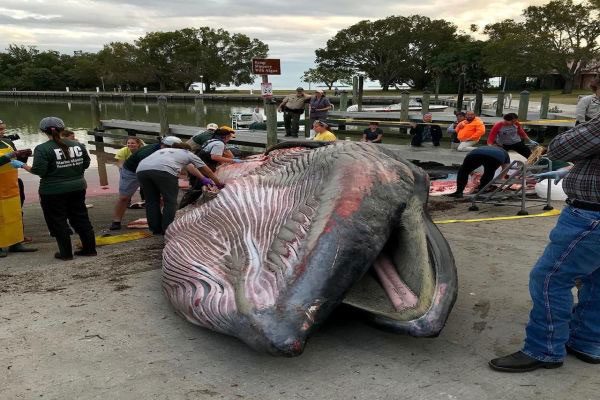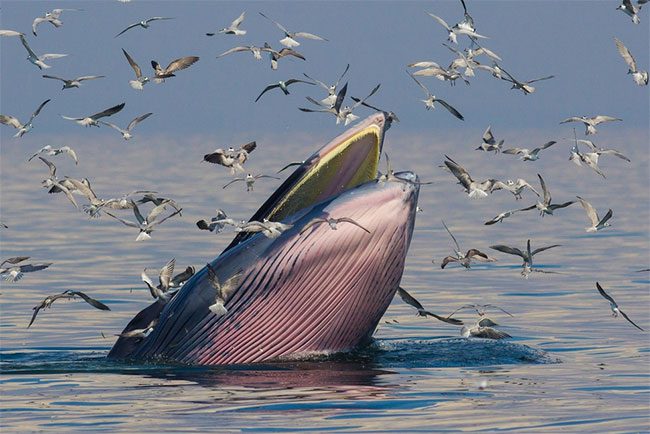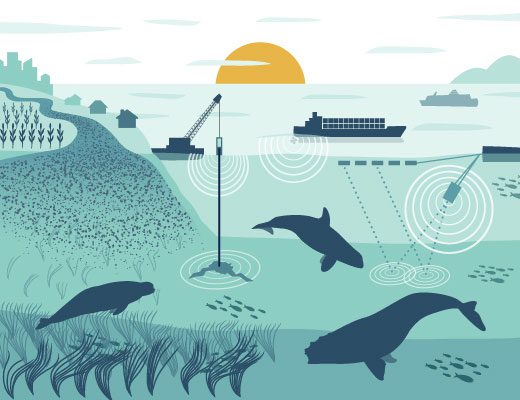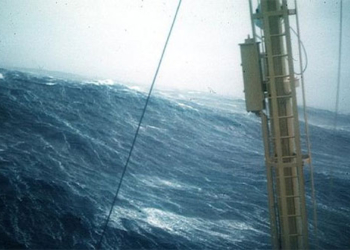The Rice’s Whales, recorded in 2021, are now facing extinction risk. Offshore mining activities are believed to have impacted them.
Previously, many scientists had spotted Rice’s Whales in the wild but mistook them for a subspecies of Bryde’s Whales. The average length of this species is about 16 meters, with a weight of 30 tons.

A stranded Rice’s Whale – (Photo: NOAA)
From 2021 to now, the National Oceanic and Atmospheric Administration (NOAA) has estimated that there are about 50 Rice’s Whales in the wild, primarily living offshore in the Gulf of Mexico.
They have a lifespan of up to 60 years, but recently their population has declined by nearly a quarter.
Scientists believe that offshore oil drilling is one of the main causes of this alarming decline in the whale population.
It is estimated that about 20% of Rice’s Whales have died due to the lingering effects of the Deepwater Horizon oil spill. Although it occurred in 2010, this incident released over 600,000 cubic meters of oil into the ocean.

Deepwater Horizon oil spill – (Photo: GETTY IMAGES)
Additionally, noise pollution from oil extraction activities forces many marine creatures, especially large species like whales, to constantly live under stress, which can lead to exhaustion.
Moreover, according to scientists, mining is also contributing to the destruction of marine ecosystems.
Animal and ecological scientists are calling for efforts to balance oil extraction activities and marine conservation. They hope that with strong measures, Rice’s Whales can escape the brink of extinction since the reproductive rate of this species remains stable; if the habitat improves, the whale population will recover.

Whales affected by ocean noise pollution – (Photo: NOAA)
Previously, many studies have shown that offshore oil extraction severely impacts whale species, including noise pollution as a contributing factor.
Lucille Chapuis, a sensory ecologist at the University of Exeter (UK), stated that species like whales use sound for communication and navigation. However, over the past 50 years, noise levels have increased 30-fold around human-affected marine areas.
“Ocean noise pollution is considered an invisible killer that can attack all marine animals since most of their daily activities, from communication, reproduction to foraging, rely on sound.” Aurore Morin, a marine conservation advocate for the International Fund for Animal Welfare (IFAW), said.

Underwater noise pollution – (Photo: DFO)
The International Ocean Noise Coalition (IONC) has conducted surveys showing that over 30 typical marine animal species often exhibit negative reactions to noise.
Among them, whales and dolphins are the most affected. Many have lost their hearing, and some have died from brain hemorrhages or due to the loss of self-defense capabilities. Others become stranded while moving or have their mating processes interrupted.
For instance, before 1950, reports from American scientists recorded only about 7 instances of whales stranding due to misdirection. However, since the use of sonar for various activities, such as military operations, the number of similar stranding cases has increased to 120.
“Countries need to have management policies for companies and organizations operating at sea,” Morin said.





















































